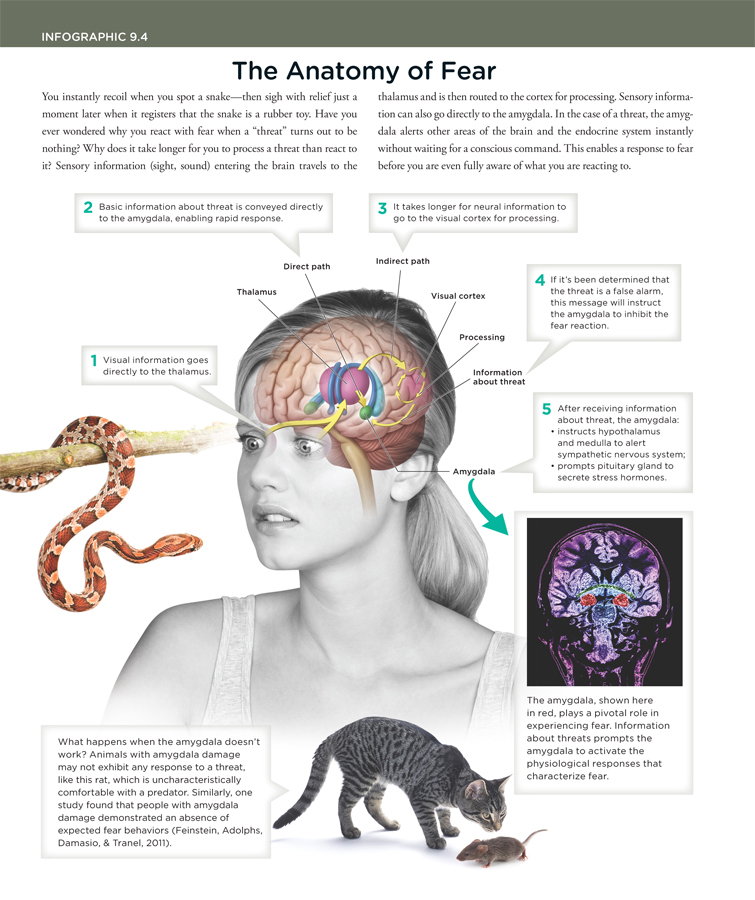Chapter 1. The Anatomy of Fear
Infographic
Scientific American: Psychology
Infographic Activity 9.4: The Anatomy of Fear
The Anatomy of Fear

You instantly recoil when you spot a snake—then sigh with relief just a moment later when it registers that the snake is a rubber toy. Have you ever wondered why you react with fear when a “threat” turns out to be nothing? Why does it take longer for you to process a threat than react to it? Sensory information (sight, sound) entering the brain travels to the thalamus and is then routed to the cortex for processing. Sensory information can also go directly to the amygdala. In the case of a threat, the amygdala alerts other areas of the brain and the endocrine system instantly without waiting for a conscious command. This enables a response to fear before you are even fully aware of what you are reacting to.
Click the image to enlarge.
Click "Next" to continue.
1.1 Quiz
1. You have decided to make a movie about the neurological foundations of different emotions. Different famous actors hear about the script, and each wants to audition for the role of their favorite emotional state. You learn that Julia Roberts loves the emotion of fear, while Arnold Schwarzenneger is crazy about anger. Jennifer Love Hewitt loves the emotion of sadness, while Adam Sandler likes to read books that make him happy. Which actor do you think will play the role of the amygdala in your movie?
| A. |
| B. |
| C. |
| D. |
2. Missy has been terrified of spiders for her entire life. She has an extermination company who comes to her house every month to “check” for active spider nests, even though they have often told her that she really only needs to have inspections twice a year. While cleaning her cabinets one day, a bowl falls off of the highest shelf and strikes Missy in the head, causing temporary damage to her amygdala. She sits back onto the kitchen floor for a moment, and while she is sitting there she sees a spider crawl out from under her refrigerator. Since her amygdala is not currently working properly, what do you think her reaction will be to the spider?
| A. |
| B. |
| C. |
| D. |
3. How is it that we often respond to a frightening stimulus before we even realize that we are afraid?
| A. |
| B. |
| C. |
| D. |
4. If your amygdala gets triggered by a potentially threatening stimulus that is then determined to be a “false alarm,” what will happen?
| A. |
| B. |
| C. |
| D. |
5. Once the amygdala has received a threatening message that requires a fear response, what will be the next step in the sequence of neurological events?
| A. |
| B. |
| C. |
| D. |
Activity results are being submitted...